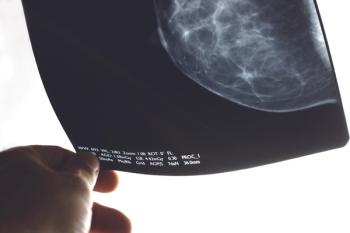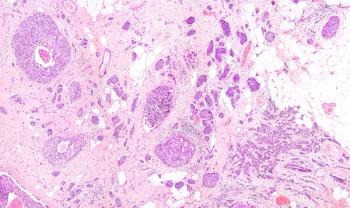
Oncology NEWS International
- Oncology NEWS International Vol 16 No 7
- Volume 16
- Issue 7
Electronic Negotiation With Drug Distributors Brings Lower Prices for Chemotherapy Drugs
Rising costs, evolving markets, and tighter regulatory conditions are challenging the way community oncologists purchase drugs. OneOncology, Inc., an innovative new healthcare technology company, simplifies the time-consuming process of procuring oncology products. Cancer Care & Economics (CC&E) recently spoke with the company's founder and chief executive officer, M. Steven Kirchof, a nationally known expert in community cancer care.
ABSTRACT: Rising costs, evolving markets, and tighter regulatory conditions are challenging the way community oncologists purchase drugs. OneOncology, Inc., an innovative new healthcare technology company, simplifies the time-consuming process of procuring oncology products. Cancer Care & Economics (CC&E) recently spoke with the company's founder and chief executive officer, M. Steven Kirchof, a nationally known expert in community cancer care.
CC&E: What was the impetus for starting OneOncology?
MR. KIRCHOF: Community oncologists treat more than 85% of US cancer patients. The average practice is about 2.8 doctors with a staff-to-physician ratio of 6 to 1, and each oncologist in a community setting purchases approximately $2.0 to $2.5 million in drugs per year. Because of restrictive policies enacted in the Medicare Modernization Act (MMA), many of these practices, where drugs make up about 70% of their expense structure, are under very severe financial stress. Quite simply, the current marketplace fit the need for our service.
CC&E: In a nutshell, please describe the service your company provides.
MR. KIRCHOF: We're an electronic trading hub that brings together oncology practices and pharmaceutical oncology drug distributors in a marketplace using real-time reverse auction technology that we have customized specifically for community oncology.
Our technology allows community oncology practices to strengthen the health of their practice and the overall oncology community by increasing the efficiency of their drug purchasing while maintaining complete control over the treatments and drug formularies they want to use.
CC&E: How do you reduce the administrative burden of drug procurement?
MR. KIRCHOF: In today's environment, the community oncology practice typically shops for drugs on Monday morning. Quite a few literally get on the telephone and shop the distributors for the lowest prices in the country and essentially cherry pick the drugs and then ask for that price from their current distributor. We dramatically reduce the time and labor of that process by using the electronic marketplace; we drive the price down to the lowest in the market and achieve that equilibrium for our customers. An electronic market results in dynamic pricing: The price for the item being auctioned changes instantaneously because of the electronic format. As practices observe the price changing in real time, the price will continue to fall until a rational market price is established. A 1% decrease in drug price results in about a15% improvement to the bottom line.
We also run all of our transactions between the distributor and the oncology practice electronically using Sub Network Organization (SNO) technology. And we use very sophisticated exception reporting so we typically know when there is a problem within the drug supply chain far sooner than we have in the past.
CC&E: What's entailed in the registration process and the basic costs to participating physicians?
MR. KIRCHOF: The registration process is simple. On the physicians' side of registration, the practice has to give us some basic demographics, physician background, the number of sites or the "ship to" location, their historical purchasing data, and a Dunn & Bradstreet credit rating. They are benchmarked against other practices in the country, and they immediately know where they stand by percentile in their drug purchasing efficiency. There is no cost for the oncology practice. Our fee is paid by the distributor and/or the manufacturer.
On the distributors' side, the registration criteria are similar, although a bit stricter from a qualification standpoint so we can be sure that we only contract with qualified distributors that can meet the demands of the oncology marketplace.
CC&E: What has been the reaction from the payer community?
MR. KIRCHOF: We visited with the payer community last fall, and they obviously like our product because it reduces the price of drugs in the marketplace, and that's good for both the payer and, of course, their customer, the employer.
By simplifying the supply chain and driving out inefficiency, our technology benefits all of the stakeholders in the marketplace: the patients because their co-pays are lower; the practice because they're on the front end of lowering drug costs; and clearly the payer.
For the manufacturer and the distributor, there are three demonstrable benefits. First, we level the playing field by providing open access to the community oncology demand. Because we are driving so much efficiency and transparency into the supply chain, it gives all distributors equal access to the aggregated demand.
Second, our service virtually eliminates sales and marketing costs. And third, we increase efficiency by ensuring distributors transparency to credit-related issues that arise within community oncology. For instance, in the first quarter alone, there were over a dozen community oncologists who went out of business, primarily because they were losing money.
CC&E: Any closing thoughts?
MR. KIRCHOF: We have the finest cancer care system in the world, but the community setting is being hampered by the legislative changes Congress adopted in 2004. So when we started looking at this market opportunity, we were also driven by a desire to help cancer patients and advocate for community oncologists.
In fact, our cost-saving technology addresses the access-to-care issue, because without a workable margin, community oncologists are forced to reduce staff and services. Moreover, by introducing electronic negotiation technology into the drug supply chain in community oncology, we align all of the stakeholders, bringing them a unique service that will increase operational efficiency across the entire supply chain. Everyone wins.
Articles in this issue
over 18 years ago
Education Plan Promotes Use of Evidence-Based Practiceover 18 years ago
New Antiangiogenesis Agent Promising in Glioblastomaover 18 years ago
SearchMedica Oncology Debuts at ASCOover 18 years ago
New Small Molecule TKI Active in Thyroid Cancerover 18 years ago
NCI Rejects NSABP's P-4 Prevention Trialover 18 years ago
Trustee Warns That Medicare Is Heading for Insolvencyover 18 years ago
Experts Push for Trials of Statins to Prevent Prostate Caover 18 years ago
First-Line Dasatinib Effective in Chronic Phase CMLover 18 years ago
Vascular Disrupting Agent NPI-2358 in Phase I StudyNewsletter
Stay up to date on recent advances in the multidisciplinary approach to cancer.





















































































